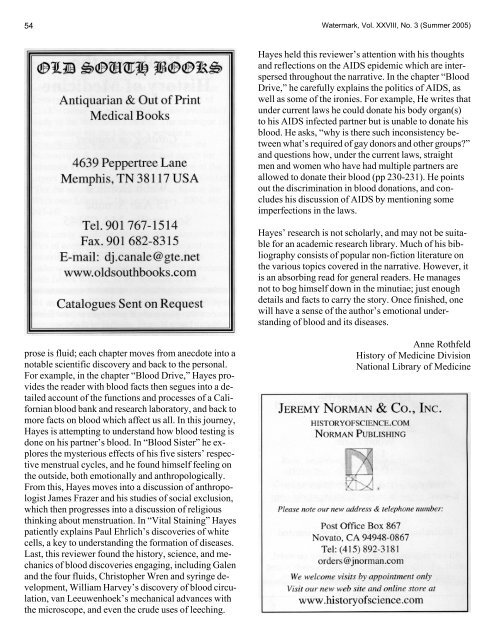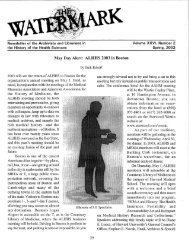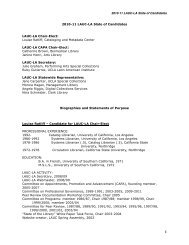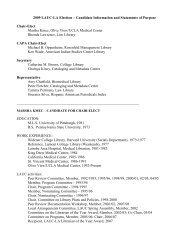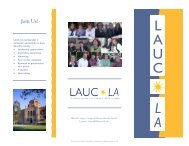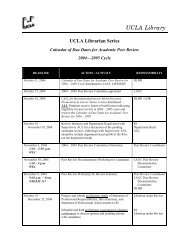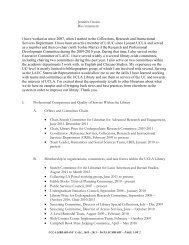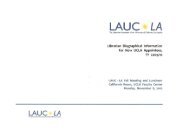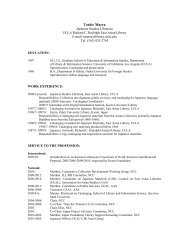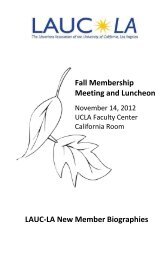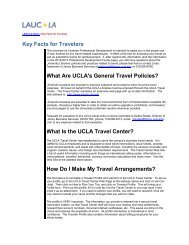Summer 2005 - UCLA
Summer 2005 - UCLA
Summer 2005 - UCLA
Create successful ePaper yourself
Turn your PDF publications into a flip-book with our unique Google optimized e-Paper software.
54<br />
prose is fluid; each chapter moves from anecdote into a<br />
notable scientific discovery and back to the personal.<br />
For example, in the chapter “Blood Drive,” Hayes provides<br />
the reader with blood facts then segues into a detailed<br />
account of the functions and processes of a Californian<br />
blood bank and research laboratory, and back to<br />
more facts on blood which affect us all. In this journey,<br />
Hayes is attempting to understand how blood testing is<br />
done on his partner’s blood. In “Blood Sister” he explores<br />
the mysterious effects of his five sisters’ respective<br />
menstrual cycles, and he found himself feeling on<br />
the outside, both emotionally and anthropologically.<br />
From this, Hayes moves into a discussion of anthropologist<br />
James Frazer and his studies of social exclusion,<br />
which then progresses into a discussion of religious<br />
thinking about menstruation. In “Vital Staining” Hayes<br />
patiently explains Paul Ehrlich’s discoveries of white<br />
cells, a key to understanding the formation of diseases.<br />
Last, this reviewer found the history, science, and mechanics<br />
of blood discoveries engaging, including Galen<br />
and the four fluids, Christopher Wren and syringe development,<br />
William Harvey’s discovery of blood circulation,<br />
van Leeuwenhoek’s mechanical advances with<br />
the microscope, and even the crude uses of leeching.<br />
Watermark, Vol. XXVIII, No. 3 (<strong>Summer</strong> <strong>2005</strong>)<br />
Hayes held this reviewer’s attention with his thoughts<br />
and reflections on the AIDS epidemic which are interspersed<br />
throughout the narrative. In the chapter “Blood<br />
Drive,” he carefully explains the politics of AIDS, as<br />
well as some of the ironies. For example, He writes that<br />
under current laws he could donate his body organ(s)<br />
to his AIDS infected partner but is unable to donate his<br />
blood. He asks, “why is there such inconsistency between<br />
what’s required of gay donors and other groups?”<br />
and questions how, under the current laws, straight<br />
men and women who have had multiple partners are<br />
allowed to donate their blood (pp 230-231). He points<br />
out the discrimination in blood donations, and concludes<br />
his discussion of AIDS by mentioning some<br />
imperfections in the laws.<br />
Hayes’ research is not scholarly, and may not be suitable<br />
for an academic research library. Much of his bibliography<br />
consists of popular non-fiction literature on<br />
the various topics covered in the narrative. However, it<br />
is an absorbing read for general readers. He manages<br />
not to bog himself down in the minutiae; just enough<br />
details and facts to carry the story. Once finished, one<br />
will have a sense of the author’s emotional understanding<br />
of blood and its diseases.<br />
Anne Rothfeld<br />
History of Medicine Division<br />
National Library of Medicine


